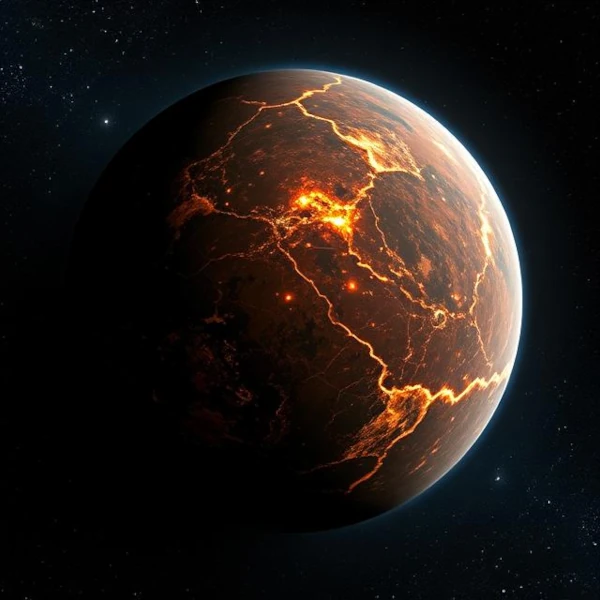
Located about 40 light-years from Earth, in the constellation of Cancer, 55 Cancri e is a super-Earth about twice the size of our planet. This rocky world, in an extremely close orbit to its star (less than 2.5 million km), has thermal and optical characteristics that have long puzzled astrophysicists. Initially considered a planet covered in diamonds due to its high density and potentially carbon-rich composition, it instead reveals an incandescent surface, punctuated by volcanic eruptions and magma flows.
The Spitzer space telescope, and more recently the James Webb, have observed spectacular light variations, which could suggest a dynamic atmosphere or atypical optical reflection phenomena. These observations then raise a question: is what we perceive as a jewel-like brilliance real, or is it an optical effect, amplified by atmospheric reflections or the planet's phase effect?
The surface temperature of 55 Cancri e exceeds 2400 K on the day side, while its night hemisphere could be much colder, suggesting limited thermal circulation, and thus a thin or non-existent atmosphere. However, some infrared data detect cyclical emissions that cannot be explained solely by a bare surface. One hypothesis proposes the existence of a thin atmosphere rich in evaporated minerals, forming a halo capable of reflecting and re-emitting starlight variably, producing an optical illusion about its true nature.
Another possibility mentioned is intense volcanism comparable to that of Io, Jupiter's moon, which would cause the formation of gas plumes. These ejections could temporarily increase the albedo or cause spectral variations mistakenly interpreted as constant surface properties. An atypical spin-orbit resonance (potentially 3:2 instead of 1:1) is also mentioned, which would induce complex illumination cycles. In any case, the models must integrate the combined effects of rotation, gravitational tides, and extreme stellar irradiation.
Thus, the brilliance of 55 Cancri e, far from being a simple material property, results from a complex interplay between orbital dynamics, radiative interactions, and extreme geophysics. This "cosmic jewel" may be less a raw diamond than a distorting mirror of our perceptions.
The 55 Cancri (or Copernicus) system is a binary system composed of a primary star (55 Cancri A, type G) and a red dwarf (55 Cancri B). Five confirmed planets orbit the primary star. This system has a complex architecture with planets ranging from super-Earth to giant planet. Here are their main characteristics:
| Planet | Type | Mass (M⊕) | Radius (R⊕) | Orbital period (days) | Semi-major axis (AU) | Estimated temperature (K) | Comments |
|---|---|---|---|---|---|---|---|
| 55 Cancri e | Super-Earth | 8.0 | 1.9 | 0.7365 | 0.01544 | 2400 | Very hot rocky planet, close to the star |
| 55 Cancri b | Hot Jovian | 264 | — | 14.65 | 0.1134 | 850 | First detected planet of the system |
| 55 Cancri c | Neptunian | 54.3 | — | 44.4 | 0.237 | 500 | Orbitally stable, little known |
| 55 Cancri f | Saturnian | 45.0 | — | 260 | 0.781 | 330 | Habitable zone, target of interest |
| 55 Cancri d | Giant Jovian | 3,800 | — | 5,250 | 5.77 | 130 | Distant giant planet, stabilizing |
| 55 Cancri a | Primary star | — | — | — | — | — | Host star of type G8 |
| 55 Cancri B | Stellar companion | — | — | — | — | — | Red dwarf 1000 AU away |